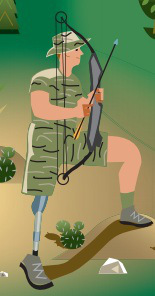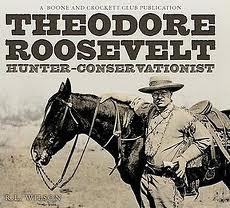 The argument between hunters and environmentalists isn’t about confliciting goals; it’s about conflicting communications, both within and without the advocacy groups that claim to speak for hunters and environmentalists. But let’s go back to the beginning.
The argument between hunters and environmentalists isn’t about confliciting goals; it’s about conflicting communications, both within and without the advocacy groups that claim to speak for hunters and environmentalists. But let’s go back to the beginning.
Hunting and conservation started at the same time and at the same place: hunters from the East who went West to hunt for recreation and then discovered that their activities were depleting or actually eliminating wild game.
It didn’t take long. As early as the 1840’s, species like white-tail deer and wild turkey were disappearing, and by the time of the Battle of the Little Bighorn in 1876, the bison herd was being reduced to a fraction of its former size. When Teddy Roosevelt went into Wyoming to bag a grizzly, the only North American big game animal for which he didn’t yet have a trophy, he spent more than a week wandering around the Wind River Range before he even saw one.
According to the U.S. Census, America still had an open frontier and wilderness areas until 1890. But for many game animals and birds, their frontier had long since been taken away. It’s not surprising, therefore, that it was hunters like Roosevelt and George Grinnell who first called for conservation as a way of protecting wild species from unlimited exploitation at the hands of man. Both men were founders of the Audubon Society and the Boone & Crockett Club - advocacy for hunting and conservation was in tandem.
The strategic alliance between hunters and conservationists broke down in 1962 with the publication of Rachel Carson’s Silent Spring. The damage wasn’t done by the message (industrialization threatened environment) but the manner in which it was delivered. The book was first serialized in The New Yorker magazine, then was a feature for the Book-of-the-Month-Club and shot to the top of the New York Times best-seller list. If you were an educated, urban resident with no interest or involvement with hunting, you read and talked about Silent Spring. If you were a hunter living on a farm or a small town, you never heard of Rachel Carson.
Carson’s book described what would happen to the natural environment without government regulation of industry. Hunters, on the other hand, had been regulated for decades. In fact, they had been instrumental in calling for regulations, writing regulations and putting up their hard-earned money to enforce them. Hunters have been buying duck stamps since 1934 and this program along with excise tax revenues has pumped billions into habitat conservation.
You would have thought that hunters and environmentalists would have made common ground given the fact that both groups understood the need to protect the environment through government regulation. But mis-communication quickly obliterated the commonalities between the two groups. On the one hand, hunters wanted to preserve wildlife habitat so as to replenish animal and bird species. On the other hand, environmentalists presumed that there was no distinction between a tree and a deer; they were both ‘wild,’ so they both needed to be protected.
It didn’t help matters that within a decade after the publication of Silent Spring, the hunters came to be represented by well-financed advocacy organizations, in particular the NRA, while the environmentalists fared just as well in developing and promoting well-financed advocacy groups, (ex. the Sierra Club.)
At the risk of provoking lots of snarky comments on both sides, let me quickly say that while advocacy organizations can play a very important role in getting a message out to a wide audience, they also have their own agendas which may or may not fit the needs and goals of the programs for which they advocate. In the case of the NRA, their chief goal is to protect gun-owners from government efforts to regulate sale or ownership of guns. Since hunters were the NRA’s chief constituency in the 1960’s, any regulation of hunting meant, by extension, a regulation of guns. As for the Sierra Club and other environmental advocates, their success relied primarily on getting people who didn’t live in the ‘natural’ areas to visit or at least take an interest in such locations. Neither of these agendas really responded to the issues raised by Roosevelt, Grinnell and the other hunters-turned-conservationists of the earlier period.
It is now clear that the greatest threat to wildlife comes not from the behavior of hunters, but from threats to habitat due to urbanization and economic development. You would think that hunters and conservationists could respond to these threats as one voice, but, if anything, they seem more polarized than ever. I would suggest that this polarization has nothing to do with habitat or wildlife; it has to do with a lack of reasonable discussion about the role of government and the options available to both sides in searching for a solution.
But when two ‘opposing’ groups seek a solution, by definition there has to be compromise. We don’t seem to live in a period where compromise is valued or even sought. To be continued in the next diary, and don’t forget to join our group: Hunters and Environmentalists.
Related articles
- 10 Best Hunting Apps For the Tech-Savvy Outdoorsman (huntercourse.com)
- Hunters call on ‘true ornithologists’ to set up genuine society (timesofmalta.com)

Recent Comments